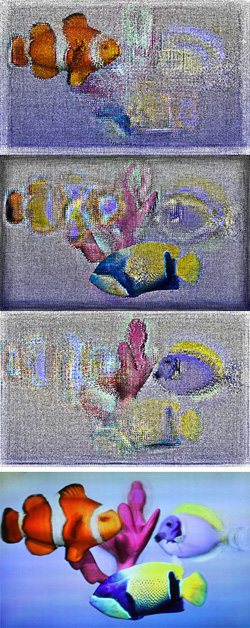Movie and TV enthusiasts around the globe will cheer tonight! The reign of the comical 3D glasses is drawing to a close.
Scientists at MIT’s Media Lab, who are at the cutting edge of graphics technology, have developed a way to make 3D images visible without the aid of eyewear. Even better, this new version of 3D-TV allows you to stand at any point in a room and still have the same experience.
Traditional theatre and television 3D requires you to view the show from a fixed perspective, with the aid of cumbersome glasses in order to view the effects. The new version of 3D works in a more hassle-free way.
Instead of presenting a different perspective for each eye, the Media Lab system, called Tensor Display, presents hundreds of perspectives, in order to accommodate a moving viewer. The sheer volume of information that would have to be displayed at once means that for every frame of 3D video, the HR3D screen in fact flickers 10 times, displaying slightly different patterns each time. The difficulty with this is that it would require a refresh rate of 1000 Hertz.
To combat this, the Tensor Display uses a third layer of liquid crystal, combined with a complex algorithm, to bring the refresh rate down to 360 Hertz.
The great news is there are already LCD TV’s currently on the market with a refresh rate of 240 Hertz, so we won’t have to wait long before they can be installed in living rooms across New Zealand!
(Three LCD screens working together to produce a coherent image)
(image credit: Camera Culture Group/MIT)




